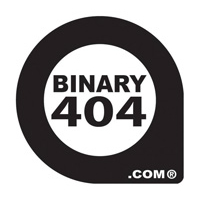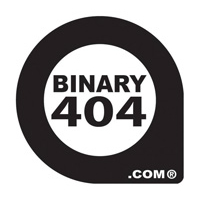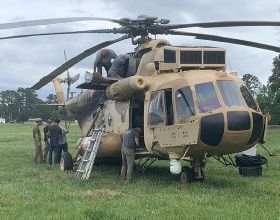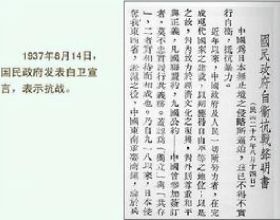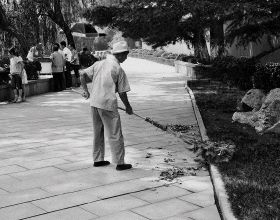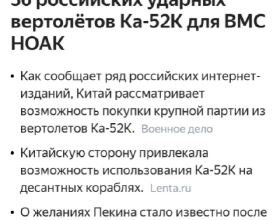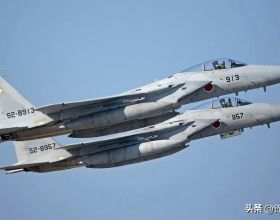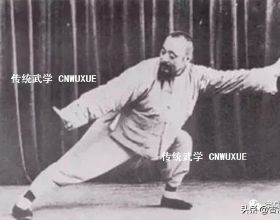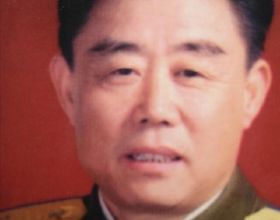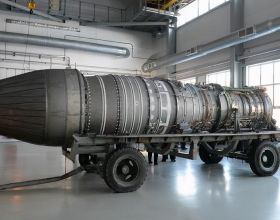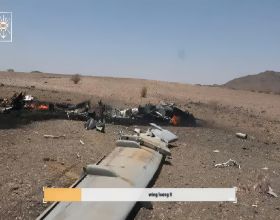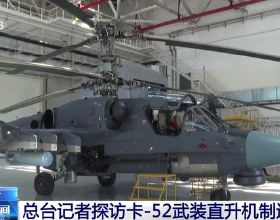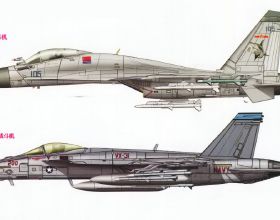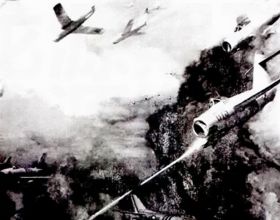趙爾巽(1844年-1927年),字公鑲,號次珊,又名次山,又號旡補,清末漢軍正藍旗人,祖籍襄平(今遼寧省遼陽市)。清代同治年間進士,授翰林院編修。歷任安徽、陝西各省按察使,又任甘肅、新疆、山西布政使,後任湖南巡撫、戶部尚書、盛京將軍、湖廣總督、四川總督等職,宣統三年(1911年)任東三省總督。武昌起義後在奉天(今遼寧)成立保安會,阻止革命。民國成立,任奉天都督,旋辭職。1914年任清史館總裁,主編《清史稿》。袁世凱稱帝時,被尊為“嵩山四友”之一。1925年段祺瑞執政期間,任善後會議議長、臨時參議院議長。
陸軍上將銜奉天都督趙褒功紀念章
此銀元是公元一九一二年(民國元年)民國成立後趙爾巽就任奉天都督,由當時奉天機器局鑄造。此獎章是趙爾巽任奉天都督時為獎勵有功將士而特地鑄造。是品特徵:在幣正面中鐫趙爾巽著戎裝正面肖像,在其外鐫一線圈,線上圈至廓緣廓肉環銘漢文‘陸軍上將銜奉天都督趙’十個字。
在幣背面中鐫‘五色旗’和‘鐵血十八星旗’,兩旗綬帶相互挽系,在兩旗交叉上方鐫‘一團嘉禾’圖案,在其下方豎銘‘褒功’二字,依廓緣勻鐫二十三個‘花草紋’,在幣外緣勻鑄邊道。
湖北省造光緒三十年大清銀幣為光緒三十年(1904年)湖北銀元局所鑄。這批銀幣存世量極其稀少,有大字和小字兩種類別,銀幣文字俊秀,龍圖生動傳神,堪稱清代龍洋中的典範,深受錢幣收藏愛好者的喜好!
光緒三十年湖北省造庫平一兩銀幣
錢幣正面中央鐫滿漢文“大清銀幣”,是中國最早有“大清銀幣”字樣的銀幣。上緣“光緒三十年湖北省造”九字,下方刻幣值“庫平一兩”。
銀幣背面中央鐫漢字“壹兩”,左右環鐫雙龍戲珠圖案,龍圖外上環鐫英文省名HU-PEH PROVINCE(湖北省),下環鐫英文幣值ONE TAEL(壹兩),左右兩端鐫滿文。銀幣文字俊秀,銀光燦爛,圖文壓印清晰,龍圖生動傳神,堪稱清代龍洋中的典範。
北洋是現在天津地區的舊稱,在清朝時被稱為直隸省。北洋機器局(又稱軍火機器製造局)是中國早期的現代化兵工廠,由北洋三國通商大臣崇厚等人於1867年創辦,1870年由李鴻章接辦。光緒十三年(1887年),李鴻章在天津建立附屬於北洋機器局的機器鑄錢局(寶津局),鑄造機制銅錢,鑄幣裝置部分來自北洋機器局,部分從英國進口。光緒二十一年(1895年),清政府准許各省仿鑄西式銀幣,時任北洋大臣的王文韶令北洋機器局試鑄銀幣,於光緒二十二年(1896年)七月鑄造了一套主幣以圓為單位、面額為壹圓、伍角、貳角、壹角、半形五枚一套五等幣值的銀幣,系北洋機器局的初鑄銀幣。
此藏品為北洋造25年光緒元寶庫平七錢二分,銀幣正面中央珠圈內鐫滿漢文“光緒元寶”四個字,珠圈外上端鐫漢文“北洋造”,下端鐫漢文幣值“庫平七錢二分”,左右兩端各鐫一個圓點。銀幣背面中央鐫蟠龍圖,上環鐫英文“光緒25年”,下鐫英文“北洋”,左右兩端稍下側各鐫一個圓點。
光緒元寶製作精美,觀賞性強,且品種多樣,容易入手,對於收藏者來說,這些足以成為他們所選擇的理由。古錢幣是不可再生之物,且存世量極為稀少,收藏價值無法估量。
褚玉璞(1887-1929),字蘊山,山東省汶上縣拳鋪鎮(今屬梁山縣)人,中華民國北洋政府時期奉系軍閥頭目。褚玉璞是土匪出身,1913年8月率數百土匪投靠軍閥張宗昌,隨袁世凱鎮壓國民黨發動的二次革命。1921年褚玉璞和張宗昌轉投奉系張作霖。此後,歷任第3混成旅第50團團長、第28混成旅旅長。1926年,任直魯聯軍第1軍副軍長兼前敵總指揮,被任命為直隸軍務督辦兼直隸省長。
民國十六年褚玉璞像四月七日週年紀念幣
“中華民國十六年褚玉璞像四月七日週年紀念幣”這枚全銀紀念幣儲存較好,其色澤自然,不論是文字還是圖案,都顯得自然細膩,深淺合適。錢面:褚玉璞半身戎裝像。錢背:中間五色旗和國民黨黨旗交叉,上環“中華民國十六年”下環“四月七日週年紀念”,左右五星。刻模深峻,人物雕刻栩栩如生,鑄造精美,原色包漿,儲存完好極稀見。 褚玉璞紀念幣,在所有民國初年北洋軍閥人物紀念幣中,價格是最高的。遠遠高於段祺瑞執政紀念幣、曹錕紀念幣、徐世昌紀念幣等的價格。可見,其數量至少。此枚藏品經歷歲月的無情洗禮,但仍然儲存完好,錢文、輪廓的清晰程度好,屬於錢幣中的上美品,具有很高的歷史價值、藝術價值和收藏價值。
評級幣,所謂評級幣是由評級公司,進行真偽鑑定,評分再用亞克力透明盒子封好,使其不再氧化,也能很好的保護錢幣的品相,為錢幣保真,如果是仿品是不允許入盒評級的。為錢幣的交易保駕護航,在古玩收藏界不存在任何疑問的藏品價格奇高,也就是所謂的熟貨,這也是是錢幣市場率先成熟的標誌。
這幾枚錢幣均為評級幣極具收藏價值,這幾枚錢幣包漿自然,底光柔和,所謂包漿是自然形成的氧化層,也有人為手盤包漿,兩者不同,但同時都有保護錢幣的功能,有如給錢幣鍍上一層保護膜,使錢幣不再氧化,便於收藏傳世,如果覺得錢幣髒,可以用清水洗,再用棉布擦乾,不要破壞包漿,破壞了包漿就相當於破壞了保護層,更重要的是包漿是鑑定新老錢幣最簡單有效的方法。細看這幾枚錢幣品相完美,沒有磕缺,損毀,變形等是不可多得收藏級錢幣,建議收藏,傳世。
英文翻譯:Zhao Erxun (1844-1927) was born in Zhenglan Banner of han Army in the late Qing Dynasty, and his ancestral home was Xiangping (now Liaoyang City, Liaoning Province). Qing Dynasty tongzhi years jinshi, award academician courtyard edit. He served successively as an inspector in Anhui and Shaanxi provinces, as well as a political commissary in Gansu, Xinjiang and Shanxi, and later as governor of Hunan, Shangshu of the Ministry of Household, General Shengjing, Governor of Huguang and Governor of Sichuan. In the third year of Xuantong (1911), he served as governor of the three northeastern provinces. After the Wuchang uprising, a security council was established in Mukden (now Liaoning province) to prevent the revolution. The establishment of the Republic of China, as the commander of Fengtian, xuan resigned. In 1914, he became president of the Qing History Museum and chief editor of The Qing History Manuscript. When Yuan Shikai declared himself emperor, he was honored as one of the "Four Friends of Song Mountain". In 1925, during the reign of Tuan Chi-jui, he was appointed chairman of the Rehabilitation Conference and Chairman of the Provisional Senate.
Army general title Mukden commander Zhao baogong commemorative medal
This silver dollar is in 1912 AD (the first year of the Republic of China) after the founding of the Republic of China Zhao Erxun assumed the office of Mukden, by the Mukden machine bureau casting. This medal was specially cast by Zhao Erxun when he was the commander of Fengtian to reward meritorious soldiers. Is the product features: in the front of the coin, Zhao Erxun wears the front portrait of the military outfit, in its outer engrave a coil, in the coil to the edge of the profiler ring Ming Chinese 'Army general title Fengtian Commander Zhao' ten words.
On the back of the coin, 'five-color flag' and 'iron blood eighteen star flag', the two flags ribbon linked each other, above the two flags cross, 'a mass of Jiahe' pattern, under which the inscription 'praise' two words, according to the edge of the outline evenly engraved twenty-three 'flowers and flowers', in the outer edge of the coin evenly cast edge.
Hubei Province made Guangxu thirty Years of Qing silver coin for Guangxu thirty years (1904) hubei Silver Dollar Bureau cast. This batch of silver coins is extremely rare in the world, with two categories of large and small characters. The silver coins have beautiful words and vivid dragon pictures, which can be called the model of Dragon Yang in the Qing Dynasty and are loved by coin collectors!
In the thirty years of Guangxu, Hubei Province, one or two silver coins were made
The central side of the coin is covered with The Chinese character "Daqing Silver Coin", which is the earliest silver coin with the words "Daqing silver coin" in China. The upper edge of the "Guangxu thirty years made in Hubei Province" nine words, engraved below the value of the "kuping one or two".
The central Chinese character "ONE and two" on the back of the silver coin, the left and right rings engraved double dragon play bead pattern, the upper ring of the dragon figure engraved in English PROVINCE name Hu-PEh PROVINCE(Hubei PROVINCE), the lower ring engraved in English value ONE TAEL(ONE and two), the left and right ends of the text. The silver coinage is beautiful, the silver light is brilliant, the picture and text are clear, and the dragon picture is vivid and vivid, which can be called the model of dragon Yang in the Qing Dynasty.
Beiyang is the old name of the present Tianjin area, which was called Zhili Province in the Qing Dynasty. Beiyang Machinery Bureau (also known as Munitions Machinery Manufacturing Bureau) was an early modern munitions factory in China. It was founded in 1867 by Chong Hou, minister of trade of the Three Beiyang Countries, and was taken over by Li Hongzhang in 1870. In the 13th year of Guangxu (1887), Li Hongzhang founded the Machine Casting Money Bureau (Baojin Bureau) in Tianjin, which was attached to the Beiyang Machinery Bureau. The casting mechanism of copper coins was partly from the Beiyang Machinery Bureau and partly imported from Britain. Guangxu 21 years (1895 years), the qing government to allow the provinces cast western-style silver, then minister of beiyang Wang Wenshao makes peiyang machine bureau ShiZhu silver COINS, Yu Guangxu twenty-two years (1896) in July for the unit with the round casting a set of standard currency, for one, wu jiao, two horn, one horn, half Angle five pieces of a set of five currency such as COINS, peiyang machine bureau at the beginning of the casting COINS.
This collection is beiyang made 25 years Guangxu Yuan treasure house flat seven money two points, the central bead circle on the front of the silver coin is full of Chinese "Guangxu Yuanbao" four words, the upper end of the bead circle is Chinese "Beiyang made", the lower end of the Chinese currency is "Kuping seven money two points", and both ends of the left and right sides are a dot. The central dragon on the back of the silver coin, the upper ring engraved in English "Guangxu 25 years", the English "Beiyang", the left and right ends slightly lower side each engraved a dot.
Guangxu Yuanbao is exquisitely made, highly ornamental, diverse and easy to acquire. For collectors, these are enough to become the reason for their choice. Ancient coins are not renewable, and the amount of existence is extremely rare, the collection value is inestimable.
Chu Yupu (1887-1929), courtesy name Yunshan, was born in Quanpu Town, Wenshang County, Shandong Province (now liangshan County). He was the head of a fengshi warlord during the Period of the Northern Government of the Republic of China. Chu yupu was born a bandit. In August 1913, he led hundreds of bandits to join warlord Zhang Zongchang in yuan Shikai's suppression of the Second Revolution launched by the Kuomintang. In 1921 chu Yupu and Zhang Zongchang transferred to Fengshi Zhang Zuolin. After that, he successively served as the commander of the 50th regiment of the 3rd Mixed Brigade and the brigade commander of the 28th mixed Brigade. In 1926, he served as deputy commander of the first Army of zhilu Allied Forces and commander in chief of the former enemy, and was appointed military affairs Supervisor and governor of Zhili.
In the 16th year of the Republic of China, Chu Yupu looked like a commemorative coin on April 7
"The 16th year of the People of China chu Yupu is like the April 7 anniversary coin" this all-silver coin is well preserved. Its color is natural. Whether it is text or pattern, it appears natural and delicate, and the depth is appropriate. Money face: Chu Yupu half - length military dress image. Money back: the five-color flag in the center and the kuomintang flag cross, the upper ring "16 years of the Republic of China", the lower ring "April 7 anniversary", around the five stars. The engraved mold is deep, the figures are lifelike, the casting is exquisite, the primary color is coated with pulp, and the preservation is very rare. Chu Yupu's commemorative coin is the highest among all the commemorative coins of northern warlords in the early years of the Republic of China. It is much higher than the price of duan Qirui's ruling coins, Cao Kun's coins and Xu Shichang's coins. So the quantity is at least. This collection has gone through the ruthless baptism of years, but it is still well preserved. The clarity of the money and outline is good. It belongs to the beauty of coins and has high historical value, artistic value and collection value.
Rating currency, the so-called rating currency is by the rating company, authenticity identification, scoring and then sealed with acrylic transparent box, so that it is no longer oxidation, can also protect the phase of the coin, coin fidelity, if it is imitation is not allowed to enter the box rating. To protect the transaction of coins, there is no doubt in the antique collection circle that the collection price is extremely high, which is the so-called cooked goods, which is also a sign of the maturity of the coin market.
The coin are rating coin collection value extremely, this a few coin patina nature, downy light, the so-called wrapped slurry is a natural formation of the oxide layer, also some people to hand wrapped slurry, the two different, but at the same time have to protect the function of money, like a plated coin on a layer of protective film, make money no longer oxidation, facilitate collection handed down from ancient times, if feel money is dirty, can wash, Then dry it with cotton cloth. Do not destroy the patna, which is equivalent to destroying the protective layer. More importantly, the patna is the simplest and effective way to identify new and old coins. Look closely at these coins with perfect appearance, no damage, damage, deformation and so on. It is a rare collection of coins. It is recommended to collect and pass down.


